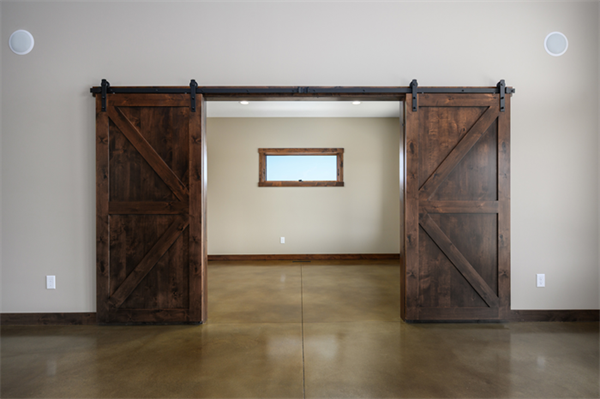Basement Moisture Problems: How to Fix Them Before You Remodel

Many Rochester basements show damp spots on walls, condensation on windows, or a musty odor—clear warning signs that moisture is present. Left unaddressed, these issues can lead to mold growth, wood rot, and indoor air quality problems.
Insights from remodeling professionals, such as Steve Gentry Construction, indicate that tackling moisture concerns before upgrades preserves the integrity of new finishes and protects your investment. By understanding how water enters and behaves in below-grade spaces, homeowners can plan effective interventions before starting a basement remodel.
In the sections that follow, we’ll cover a variety of topics pertaining to basement remodels, offering expert-backed advice and practical steps along the way to help you create a dry, durable foundation for your future living space.
Recognizing Basement Moisture Warning Signs
Visible moisture signs include water stains along foundation walls, efflorescence (white mineral deposits), peeling paint, warped wood, and persistent puddles. A musty odor often reveals mold or mildew development, a health hazard that can worsen if not corrected.
Subtle indicators include condensation on basement windows, high indoor humidity readings above 60% on a hygrometer, and dingy or discolored carpet edges. Check electrical outlets and junction boxes; dampness behind these can signal water intrusion through cracks.
Early detection guides planning before a basement remodel. Use moisture meters on walls and floors and inspect the sump pump operation. Document measurements over a week to spot patterns, helping professionals tailor barrier installations and drainage upgrades during finishing.
Impact of Poor Drainage and Grading on Basement Water Intrusion
Poor surface grading that slopes toward the foundation channels rainwater to basement walls, raising hydrostatic pressure. When soil retains water near the structure, it seeps through tiny cracks, leading to damp walls and occasional flooding after storms.
Clogged gutters or downspouts that lack proper extensions can dump water at the base of the house. Without outlets directing flow three to four feet away, downspout overflow overwhelms the foundation, saturating the soil and compromising interior waterproofing measures.
Correct grading by carving a minimum 5% slope away from the foundation over a two-foot span, and install splash blocks or downspout extensions. Pair this with surface drainage systems like channel drains to intercept runoff before it reaches the basement.
Comparing Interior and Exterior Basement Waterproofing Options
Interior waterproofing relies on sealants, epoxy injections, and interior drainage channels that collect seepage and route it to a sump pump. Products like vapor barriers and dimple boards seal walls from within while minimizing excavation.
Exterior methods require digging around the foundation to install waterproof membranes, drainage membranes, and exterior drain tile. This approach reduces water pressure against walls but demands more labor, higher cost, and proper grading restoration.
Choosing between interior and exterior solutions depends on budget, soil type, and severity of leaks. Combine both for high-risk sites: exterior membranes and drain tile outside with interior channels and sump pumps inside for comprehensive defense.
When to Engage a Basement Moisture Repair Professional
Hire a professional when moisture control requires structural repairs, such as foundation cracks wider than 1/8 inch or wall bowing. These issues can signal settling or soil pressure problems that go beyond DIY sealing.
Recurring leaks after minor fixes, rapid mold growth over more than 10 square feet, or visible wood rot in sill plates indicate complex conditions. Experts use tools like infrared cameras, bore scope inspections, and soil tests to diagnose underlying causes.
Complex exterior waterproofing, involving trenching and membrane installation, also calls for pros. A licensed contractor ensures materials meet local code, proper grading is restored, and connections between gutters, drain tile, and sump pumps operate seamlessly.
Protecting Your Remodel Investment by Addressing Moisture First
Addressing moisture before finishing saves new drywall, flooring, and insulation from mold, rot, and staining. By controlling humidity and hydrostatic pressure first, framing and finishes remain stable and warranties on new materials stay valid.
Preemptive moisture control limits long-term maintenance costs. Drywall replacement averages $60 per sheet when mold appears, while a one-time waterproofing barrier costs $5–$10 per square foot. Early action protects both the budget and project timeline.
How Steve Gentry Construction Supports Your Basement Renovation
At Steve Gentry Construction, our Rochester-based team begins every basement project with a thorough moisture assessment, addressing signs such as efflorescence and musty odors before the design phase. We optimize drainage and grading, recommend interior and exterior waterproofing, and guide you on when expert intervention is needed—all to safeguard your remodel investment.
Ready to transform your basement on a solid, dry foundation? Contact Steve Gentry Construction today or call us at 507-208-4501 to get started on your next basement remodeling project!